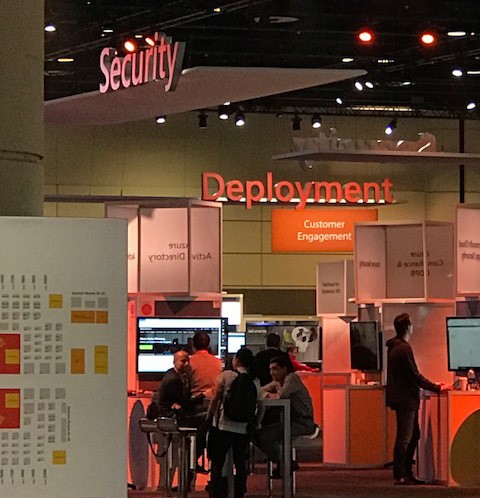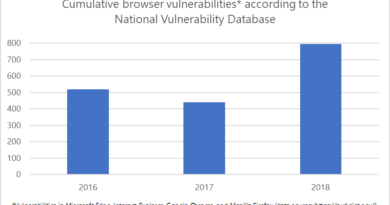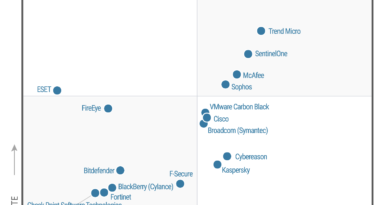Align your security and network teams to Zero Trust security demands

The security community is continuously changing, growing, and learning from each other to better position the world against cyber threats. In the latest Voice of the Community blog series post, Microsoft Security Product Marketing Manager Natalia Godyla talks with Jennifer Minella, Founder and Principal Advisor on Network Security at Viszen Security about strategies for aligning the security operations center (SOC) and network operations center (NOC) to meet the demands of Zero Trust and protect your enterprise.
Natalia: In your experience, why are there challenges bringing together networking and security teams?
Jennifer: Ultimately, it’s about trust. As someone who’s worked on complex network-based security projects, I’ve had plenty of experience sitting between those two teams. Often the security teams have an objective, which gets translated into specific technical mandates, or even a specific product. As in, we need to achieve X, Y, and Z level security; therefore, the networking team should just go make this product work. That causes friction because sometimes the networking team didn’t get a voice in that.
Sometimes it’s not even the right product or technology for what the actual goal was, but it’s too late at that point because the money is spent. Then it’s the networking team that looks bad when they don’t get it working right. It’s much better to bring people together to collaborate, instead of one team picking a solution.
Natalia: How does misalignment between the SOC and NOC impact the business?
Jennifer: When there’s an erosion of trust and greater friction, it makes everything harder. Projects take longer. Decisions take longer. That lack of collaboration can also introduce security gaps. I have several examples, but I’m going to pick healthcare here. Say the Chief Information Security Officer’s (CISO) team believes that their bio-medical devices are secured a certain way from a network perspective, but that’s not how they’re secured. Meaning, they’re secured at a lower level that would not be sufficient based on how the CISO and the compliance teams were tracking it. So, there’s this misalignment, miscommunication. Not that it’s malicious; nobody is doing it on purpose, but requirements aren’t communicated well. Sometimes there’s a lack of clarity about whose responsibility it is, and what those requirements are. Even within larger organizations, it might not be clear what the actual standards and processes are that support that policy from the perspective of governance, risk, and compliance (GRC).
Natalia: So, what are a few effective ways to align the SOC and NOC?
Jennifer: If you can find somebody that can be a third party—somebody that’s going to come in and help the teams collaborate and build trust—it’s invaluable. It can be someone who specializes in organizational health or a technical third party; somebody like me sitting in the middle who says, “I understand what the networking team is saying. I hear you. And I understand what the security requirements are. I get it.” Then you can figure out how to bridge that gap and get both teams collaborating with bi-directional communication, instead of security just mandating that this thing gets done.
It’s also about the culture—the interpersonal relationships involved. It can be a problem if one team is picked (to be in charge) instead of another. Maybe it’s the SOC team versus the NOC team, and the SOC team is put in charge; therefore, the NOC team just gives up. It might be better to go with a neutral internal person instead, like a program manager or a digital-transformation leader—somebody who owns a program or a project but isn’t tied to the specifics of security or network architecture. Building that kind of cross-functional team between departments is a good way to solve problems.
There isn’t a wrong way to do it if everybody is being heard. Emails are not a great way to accomplish communication among teams. But getting people together, outlining what the goal is, and working towards it, that’s preferable to just having discrete decision points and mandates. Here’s the big goal—what are some ideas to get from point A to point B? That’s something we must do moving into Zero Trust strategies.
Natalia: Speaking of Zero Trust, how does Zero Trust figure into an overarching strategy for a business?
Jennifer: I describe Zero Trust as a concept. It’s more of a mindset, like “defense in depth,” “layered defense,” or “concepts of least privilege.” Trying to put it into a fixed model or framework is what’s leading to a lot of the misconceptions around the Zero Trust strategy. For me, getting from point A to point B with organizations means taking baby steps—identifying gaps, use cases, and then finding the right solutions.
A lot of people assume Zero Trust is this granular one-to-one relationship of every element on the network. Meaning, every user, every endpoint, every service, and application data set is going to have a granular “allow or deny” policy. That’s not what we’re doing right now. Zero Trust is just a mindset of removing inherent trust. That could mean different things, for example, it could be remote access for employees on a virtual private network (VPN), or it could be dealing with employees with bring your own device (BYOD). It could mean giving contractors or people with elevated privileges access to certain data sets or applications, or we could apply Zero Trust principles to secure workloads from each other.
Natalia: And how does Secure Access Service Edge (SASE) differ from Zero Trust?
Jennifer: Zero Trust is not a product. SASE, on the other hand, is a suite of products and services put together to help meet Zero Trust architecture objectives. SASE is a service-based product offering that has a feature set. It varies depending on the manufacturer, meaning, some will give you these three features and some will give you another five or eight. Some are based on endpoint technology, some are based on software-defined wide area network (SD-WAN) solutions, while some are cloud routed.
Natalia: How does the Zero Trust approach fit with the network access control (NAC) strategy?
Jennifer: I jokingly refer to Zero Trust as “NAC 4.0.” I’ve worked in the NAC space for over 15 years, and it’s just a few new variables. But they’re significant variables. Working with cloud-hosted resources in cloud-routed data paths is fundamentally different than what we’ve been doing in local area network (LAN) based systems. But if you abstract that—the concepts of privilege, authentication, authorization, and data paths—it’s all the same. I lump the vendors and types of solutions into two different categories: cloud-routed versus traditional on-premises (for a campus environment). The technologies are drastically different between those two use cases. For that reason, the enforcement models are different and will vary with the products.
Natalia: How do you approach securing remote access with a Zero Trust mindset? Do you have any guidelines or best practices?
Jennifer: It’s alarming how many organizations set up VPN remote access so that users are added onto the network as if they were sitting in their office. For a long time that was accepted because, before the pandemic, there was a limited number of remote users. Now, remote access, in addition to the cloud, is more prevalent. There are many people with personal devices or some type of blended, corporate-managed device. It’s a recipe for disaster.
The threat surface has increased exponentially, so you need to be able to go back in and use a Zero Trust product in a kind of enclave model, which works a lot like a VPN. You set up access at a point (wherever the VPN is) and the users come into that. That’s a great way to start and you can tweak it from there. Your users access an agent or a platform that will stay with them through that process of tweaking and tuning. It’s impactful because users are switching from a VPN client to a kind of a Zero Trust agent. But they don’t know the difference because, on the back end, the access is going to be restricted. They’re not going to miss anything. And there’s lots of modeling engines and discovery that products do to map out who’s accessing what, and what’s anomalous. So, that’s a good starting point for organizations.
Natalia: How should businesses think about telemetry? How can security and networking teams best use it to continue to keep the network secure?
Jennifer: You need to consider the capabilities of visibility, telemetry, and discovery on endpoints. You’re not just looking at what’s on the endpoint—we’ve been doing that—but what is the endpoint talking to on the internet when it’s not behind the traditional perimeter. Things like secure web gateways, or solutions like a cloud access security broker (CASB), which further extends that from an authentication standpoint, data pathing with SD-WAN routing—all of that plays in.
Natalia: What is a common misconception about Zero Trust?
Jennifer: You don’t have to boil the ocean with this. We know from industry reports, analysts, and the National Institute of Standards and Technology (NIST) that there’s not one product that’s going to meet all the Zero Trust requirements. So, it makes sense to chunk things into discrete programs and projects that have boundaries, then find a solution that works for each. Zero Trust is not about rip and replace.
The first step is overcoming that mental hurdle of feeling like you must pick one product that will do everything. If you can aggregate that a bit and find a product that works for two or three, that’s awesome, but it’s not a requirement. A lot of organizations are trying to research everything ad nauseum before they commit to anything. But this is a volatile industry, and it’s likely that with any product’s features, the implementation is going to change drastically over the next 18 months. So, if you’re spending nine months researching something, you’re not going to get the full benefit in longevity. Just start with something small that’s palatable from a resource and cost standpoint.
Natalia: What types of products work best in helping companies take a Zero Trust approach?
Jennifer: A lot of requirements stem from the organization’s technological culture. Meaning, is it on-premises or a cloud environment? I have a friend that was a CISO at a large hospital system, which required having everything on-premises. He’s now a CISO at an organization that has zero on-premises infrastructure; they’re completely in the cloud. It’s a night-and-day change for security. So, you’ve got that, combined with trying to integrate with what’s in the environment currently. Because typically these systems are not greenfield, they’re brownfield—we’ve got users and a little bit of infrastructure and applications, and it’s a matter of upfitting those things. So, it just depends on the organization. One may have a set of requirements and applications that are newer and based on microservices. Another organization might have more on-premises legacy infrastructure architectures, and those aren’t supported in a lot of cloud-native and cloud-routed platforms.
Natalia: So, what do you see as the future for the SOC and NOC?
Jennifer: I think the message moving forward is—we must come together. And it’s not just networking and security; there are application teams to consider as well. It’s the same with IoT. These are transformative technologies. Whether it’s the combination of operational technology (OT) and IT, or the prevalence of IoT in the environment, or Zero Trust initiatives, all of these demand cross-functional teams for trust building and collaboration. That’s the big message.
Learn more
Get key resources from Microsoft Zero Trust strategy decision makers and deployment teams. To learn more about Microsoft Security solutions, visit our website. Bookmark the Security blog to keep up with our expert coverage on security matters. Also, follow us at @MSFTSecurity for the latest news and updates on cybersecurity.
READ MORE HERE



